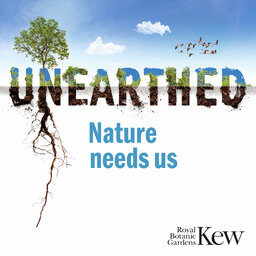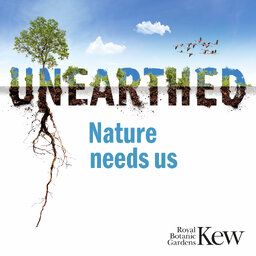Foods of the Future
Unearthed - Nature needs us
Wildlife is becoming extinct at an alarming rate and habitats are under strain. What can nature itself teach us about how to heal our planet and suppo…With so many of our favourite foods facing extinction, including bananas, chocolate and coffee, what will be on our kitchen tables in the future?
In this episode, James Wong looks at what actions we need to take today, to secure nutritious and disease-resilient food in the future.
Hear from artists and designers Sharp and Sour on how they create installations to shock the public into the realities of food’s future plight.
Dr Carly Cowell explains how it’s not just the varieties of foods we eat that are dwindling, but their nutritional content too, and warns of the impact this can have upon our health and wellbeing. We head to Wakehurst in Sussex to find out how scientists are exploring the adaptabilities of different kinds of banana, before Jack Plummer explains the plight of our beloved yellow friend in the Palm House back at Kew in London.
And in Wakehurst’s Bethlehem Wood, two scientists explore a very exciting art installation: Flea and Folly Architect’s The False Banana Pavilion which looks at Enset: a well-known staple in parts of Ethiopia that could help challenge world hunger and provide a varied and nutritious solution in difficult climate conditions.
Dr James Borrell and Dr Wenawek Abede explore this work in response to their research, and explain why diversity and variety are just so important in feeding the world.
Did you know that fire may be a man-made problem in many cases, but in others, it’s a vital part of the natural development of ecosystems? Dr Ellie Wilding looks at how plants develop remarkable survival techniques in the face of this ever-increasing global phenomenon.
And from the cloud-forests of Colombia, all the way to Edible Science: Kew’s Kitchen Garden, James Wong finds out how unique ecosystems and practices can teach us all how to farm, grow and eat more sustainably. Botanical Horticulturist and plot pioneer Helena Dove also has some tips for any home growers looking for inspiration from around the world.
 Unearthed - Nature needs us
Unearthed - Nature needs us


